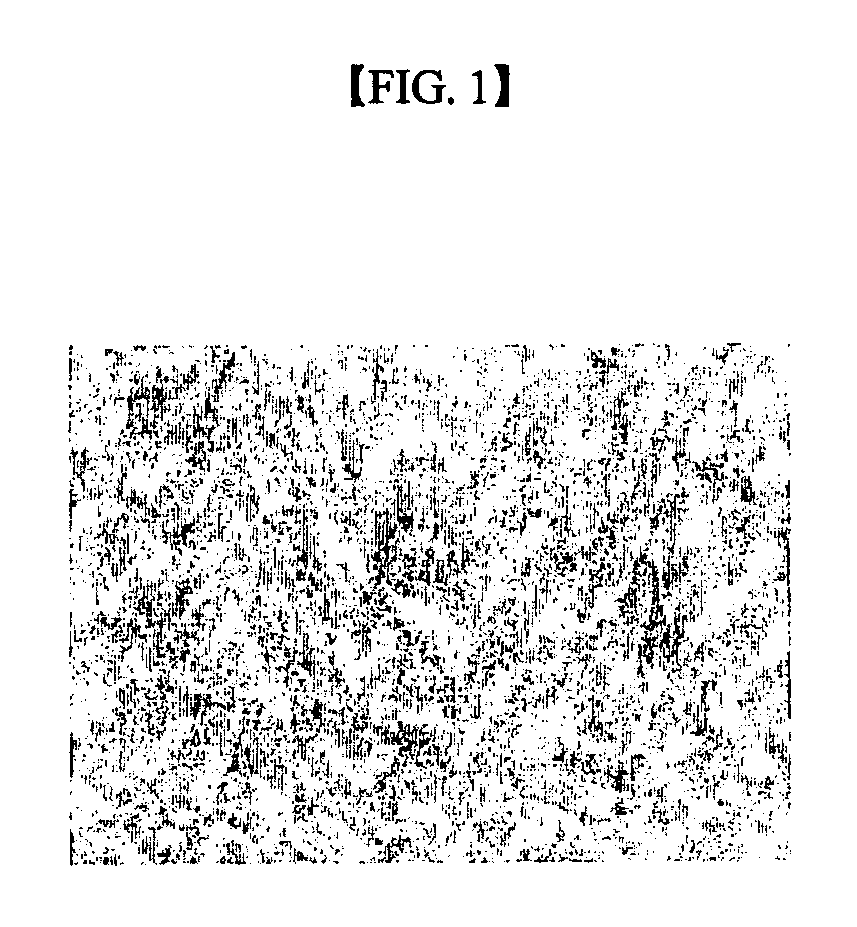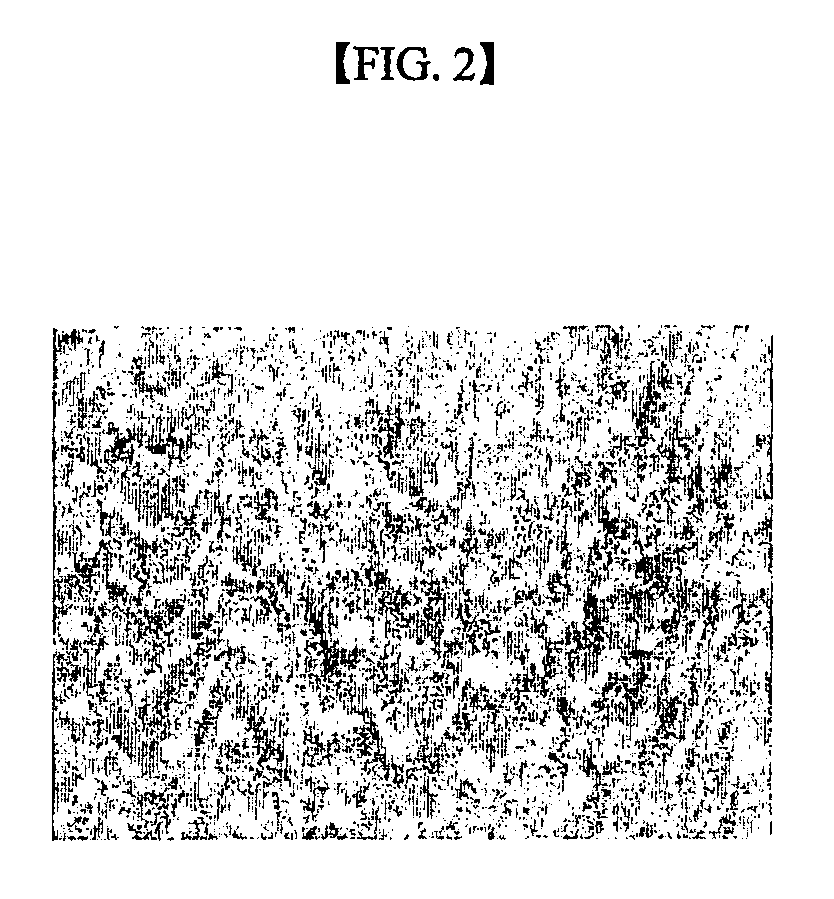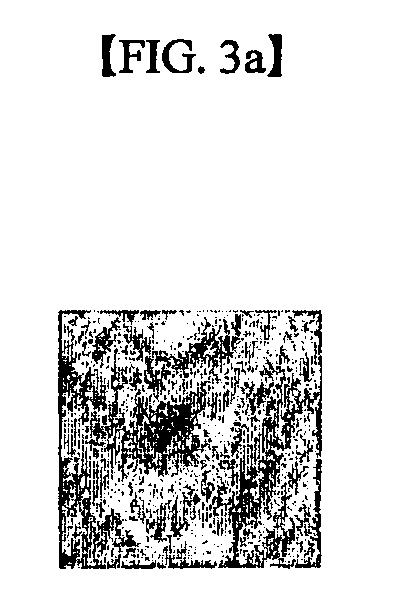Method for differentiating mesenchymal stem cell into neural cell and pharmaceutical composition containing the neural cell for neurodegenerative disease
a technology of neural cells and stem cells, which is applied in the direction of drug compositions, skeletal/connective tissue cells, cardiovascular disorders, etc., can solve the problems of cell replacement therapy having a limitation in practical application, the conventional method of implanting cells fully into donors' tissues to patients, and the difficulty of obtaining enough cells for patients
- Summary
- Abstract
- Description
- Claims
- Application Information
AI Technical Summary
Benefits of technology
Problems solved by technology
Method used
Image
Examples
example 1
Isolation of a Mononuclear Cell in a Bone Marrow
[0056] About 10 ml of a bone marrow was obtained from pelvis of healthy applicants and kept in glass tube comprising Heparin. About 30 ml of phosphate buffered saline (PBS) was added to about 10 ml of the bone marrow, about 20 ml of the mixed solution was flowed slowly on about 10 ml of Ficoll-Paque™ plus (1.077 g / ml, Amersham Pharmacia Biotech) solution and centrifuged on density gradient at 2,000 rpm for about 20 minutes. The layer of a mononuclear cell was collected between upper layer and Ficoll-Paque™ plus layer and centrifuged at 1,800 rpm for about 5 minutes. Thus, the mononuclear cell was only obtained.
example 2
Culture of the Mononuclear Cell
[0057] The mononuclear cell prepared by Example 1 was inoculated into culture flask of about 1×106 cells / cm2 and after about 4 hours, an unanchored cell was removed by washing with a new basal medium. The new basal medium used Wiliams' E medium (Gibco BRL) comprising 3.5M hydrocortisone (Sigma), fatty acid free bovine serum albumin (Gibco BRL), 50 ng / ml linoleic acid (Sigma), 0.1M CuSO4 5H2O(Sigma), 50 pM ZnSO4 7H2O(Sigma), 3 ng / ml H2 SeO3 (Sigma), 1.05 mg / ml NaHCO3(Sigma), 1.19 mg / ml HEPES(Sigma), 100 U / ml Penicillin(Gibco BRL), 10 mg / ml Streptomycin(Gibco BRL), and 25 g / ml Amphotericin(Gibco BRL).
example 3
Differentiation of the Mononuclear Cell into a Neural Cell without Confluent Culture
[0058] Example 3 confirmed whether the mononuclear cell cultured in Example 2 was differentiated into the neural cell in a medium comprising about 10 ng / ml of the epithermal growth factor (Gibco BRL) and about 20 ng / ml of the hepatocyte growth factor(R&D systems) without confluent culture. Then the differentiation medium was changed twice per week.
[0059] As the mononuclear cell was cultured in the differentiation medium, the morphological change of the mononuclear cell was not detected after about 1 week. The neural cell colony was appeared after about 4 weeks, and proliferated continuously. A neuron with long axon and short dendrite, and an astrocyte with only short dendrite were observed after about 8 weeks. Further, from about 8 weeks, Example 3 was confirmed to proliferate maintaining same morphology even in a medium comprising only epithermal growth factor.
[0060] In contrast to culturing in t...
PUM
| Property | Measurement | Unit |
|---|---|---|
| concentration | aaaaa | aaaaa |
| concentration | aaaaa | aaaaa |
| concentration | aaaaa | aaaaa |
Abstract
Description
Claims
Application Information
 Login to View More
Login to View More - R&D
- Intellectual Property
- Life Sciences
- Materials
- Tech Scout
- Unparalleled Data Quality
- Higher Quality Content
- 60% Fewer Hallucinations
Browse by: Latest US Patents, China's latest patents, Technical Efficacy Thesaurus, Application Domain, Technology Topic, Popular Technical Reports.
© 2025 PatSnap. All rights reserved.Legal|Privacy policy|Modern Slavery Act Transparency Statement|Sitemap|About US| Contact US: help@patsnap.com



